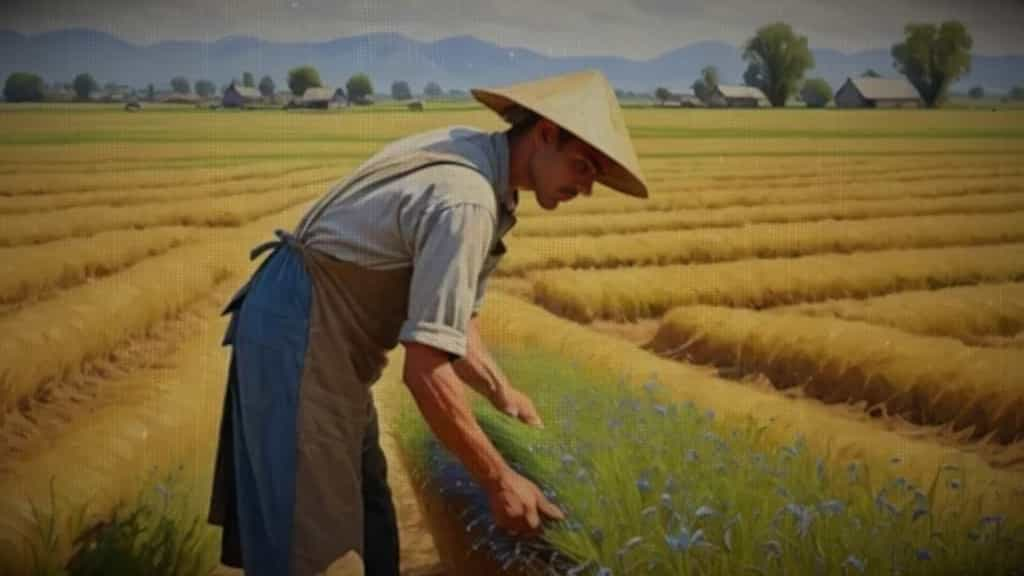Flat Rate Shipping to the Continental US

Now, folks, we live in an age of wonders, where man’s creations seem to spring up overnight, like mushrooms after a spring rain. But all this progress, it often comes at a cost, leavin’ a trail of waste and destruction in its wake. So it’s only natural to ask, when considering a fine fabric like linen, how does it stack up when it comes to environmental friendliness and sustainability?
Well, let’s examine the evidence like a jury weighin’ testimony, shall we?
Linen, as we’ve established, is a product of the earth, woven from the fibers of the flax plant. And unlike those newfangled synthetic fabrics, flax is a renewable resource. You plant it, you harvest it, and the cycle begins anew, without depleting the land or polluting the water.
Furthermore, flax is a relatively thirsty plant, requiring far less water than cotton to thrive. Why, I’ve seen cotton fields that sucked up more water than a steamboat boiler, leavin’ the surrounding land parched and barren. Flax, on the other hand, is a model of efficiency, making the most of what nature provides.
And here’s another point in linen’s favor: it’s biodegradable. Now, that’s a word that gets tossed around a lot these days, but it means something powerful in this context. When a linen garment has reached the end of its long and illustrious life, it doesn’t linger in landfills for centuries like some plastic monstrosity. No sir, linen returns to the earth from whence it came, decomposing naturally and leaving nary a trace.
But hold on a minute, you might be sayin’. If linen’s so environmentally friendly, why aren’t we all wearin’ it? Well, there are a couple of caveats to consider.
First and foremost, linen production can be labor-intensive. From the harvesting of the flax plant to the weaving of the fabric, it requires a skilled hand and a patient heart. And while some folks might see that as a drawback, I say it’s a testament to linen’s value. When you purchase a linen garment, you’re not just buying a piece of clothing, you’re investing in the craftsmanship of dedicated individuals.
Secondly, like any agricultural endeavor, flax cultivation can impact the environment. If not managed responsibly, it can contribute to soil erosion and degradation. That’s why it’s crucial to support companies and farmers who prioritize sustainable farming practices— using crop rotation, cover crops, and other methods to protect the land for future generations. And thankfully, the experts in the field note that organic certifications are available, ensuring that linen is produced with the utmost care for the environment.
So, there you have it, folks. Is linen perfectly environmentally friendly and sustainable? Well, perfection is a lofty goal, like tryin’ to navigate the Mississippi without encounterin’ a single snag. But linen certainly comes closer than most fabrics. It’s a product of the earth, crafted with care and built to last. And in a world grappling with the consequences of its own excesses, that’s a story worth celebratin’.

The Cisco Home Teddy Sofa by John Derian features plush, gently curved arms and a solidly comfortable seat, blending coziness with sophistication. Measuring 78 inches wide and 27 inches high, it boasts meadow-style legs with an ebony maple finish and a tight seat and back cushion for a clean look. Made in the USA with FSC® Certified Hard Wood and customizable options, this sofa offers both style and sustainability.
The Cisco Home Coop Sofa by John Derian features lavish stuffing, thick tufting, and fringe arm detail, offering a perfect blend of style and comfort. Measuring 64 inches wide and 31 inches high, this customizable sofa is crafted in the USA with FSC® Certified Hard Wood and 8-way hand-tied support. Choose from many upholstery options to suit your decor and enjoy the eco-friendly Inside Green option for a sustainable choice.
The Brook Sofa, by John Derian, features a low back, rolled arms, and all-over hand tufting. Inspired by a French sofa, it offers generous seating and room to stretch out. Choose from four linen or six velvet choices—or have it covered in your fabric choice.